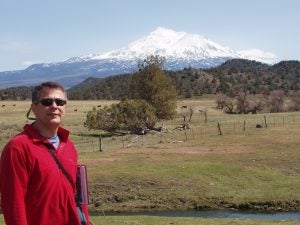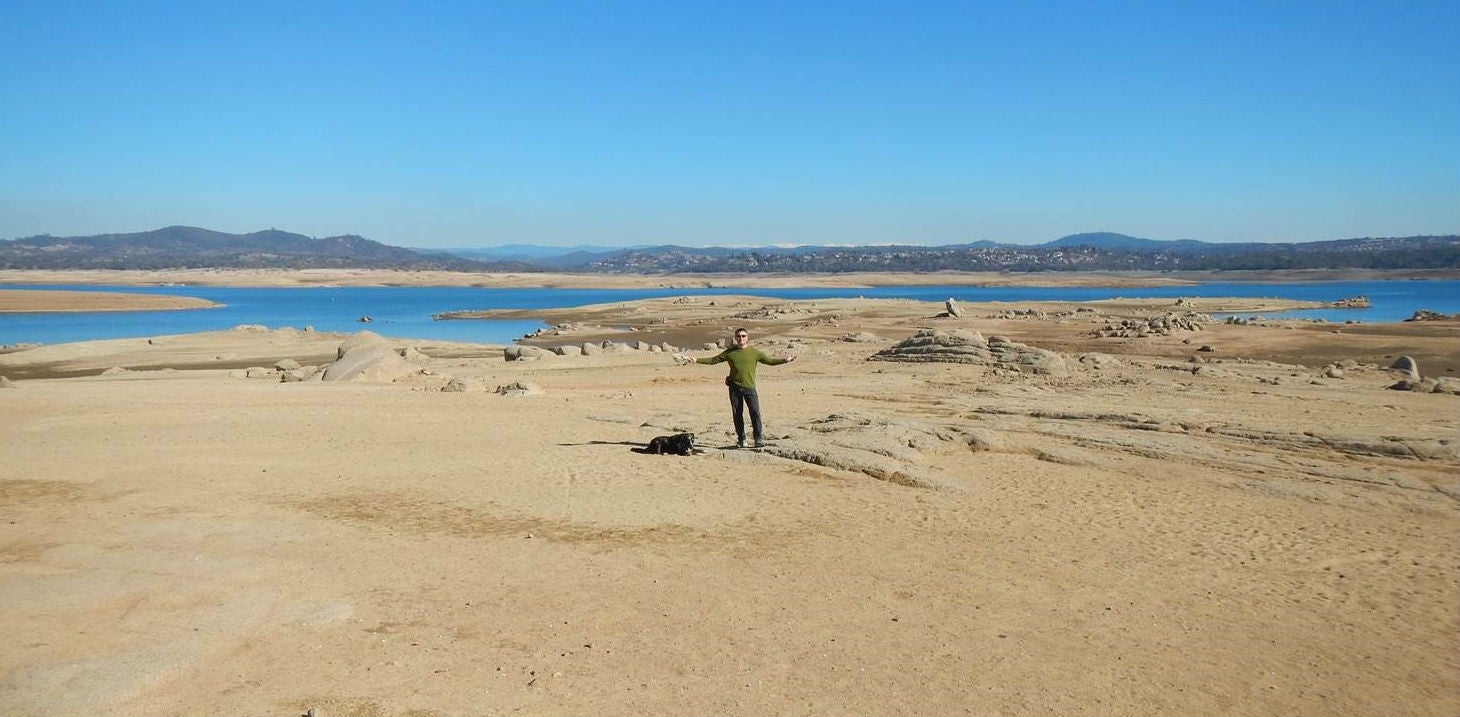
Banks of the Shasta River, Siskiyou County, California (Mount Shasta in the background)
Eastern Tennessee, at the edge of Appalachia, is a beautiful part of the country. Abundant rainfall and a humid climate have created a lush, green landscape filled with thriving streams and rivers. As an adolescent living in this environment, fishing was one of my family’s favorite pastimes. I have such great memories of floating these rivers and catching smallmouth bass and walleye.
But not all streams were great for fishing in Eastern Tennessee. Runoff and sedimentation from widespread coal mining and manufacturing would turn some rivers red. The sight of rivers nearly devoid of life disturbed me and marked the beginning of my slow evolution toward a career in water management.
My career has been a journey, exploring and addressing the nuances that define water, particularly in the western United States. The lure of water led me to Colorado State University, where I received a doctorate degree in watershed sciences. There I immersed myself in water issues, with a big focus on agricultural water use. I made my way back east to teach geology at Radford University before moving to California to begin work as a watershed engineer and consultant.
Today, as an associate vice president at Environmental Defense Fund, I am focused on developing collaborative solutions for managing water scarcity throughout the West.
This task will not be easy. For more than a hundred years, water use here has been defined by a complex maze of archaic rules, confusing policies and misaligned incentives.
Fortunately, change is in the air.
Reversing groundwater depletion
With the passage of the California Sustainable Groundwater Management Act (SGMA) in 2014, we have a huge opportunity to rebalance water use and reverse depletion trends in a state burdened with drought and a growing population.
Because the law’s deadlines don’t convey the urgency of the present situation (the last compliance deadlines do not hit until 2042!), EDF is working to accelerate SGMA implementation through collaboration and stakeholder outreach. Our goal: to establish strong water transaction programs that will allow all water users, including the environment and disadvantaged communities, to get what they need.
So what does a sustainable water program look like?
First, it will allow water users to exchange and direct water to where it is needed most. Then, utilizing state-of-the-art tools to analyze water usage data, we’ll be able to predict future behavior and continuously improve our water markets. Ultimately it will create a holistic system that operates sustainably, and adapts to the uncertainty of climate change and other economic variables.
[Tweet “From Tennessee to the arid West, water runs through his work, via @GrowingReturns: https://edf.org/hWw”]
Bringing incentives to farmers
Over the course of my career, I’ve worked closely with disparate communities throughout the region – individual farmers and ranchers, and water and irrigation districts, some serving a single ranchette, with others managing over 100,000 acres. I’ve partnered with districts that are dominated by one crop, such as rice or nut trees, and require the same dependable supply of water every year. Then there are districts that grow multiple crops and have more flexibility.
Opportunities abound to provide funding incentives and facility improvements so water users can more easily contribute to community solutions and still meet their own production objectives.
I’ve always been impressed by the degree to which farmers and ranchers intimately know their land.
Despite the challenges their work presents and their small operating margins, many of them opt to take the road less traveled, which is often more expensive, to ensure the long-time viability of their operations and a healthier ecosystem. The changes they implement are often modest, but if enough actors embrace the right behaviors by, for example, planting new crops or irrigating differently, the cumulative effect can be huge.
The idea of community is central to my philosophy. If you have a small group, you determine what works best for that group. But you also need to recognize that the small group is part of a larger whole that may have a bigger set of objectives. Collaborating with disparate stakeholders to find the best solutions and trade-offs within and among different communities is what our work at EDF is all about.

Folsom Lakebed (record low levels in November 2015)
Landscapes are my classroom
More than anything, I’m a student of landscapes. Whether they’re desert vistas almost completely devoid of people, verdant farmlands, or urban jungles overflowing with humanity, I subscribe to the idea that we can make progress towards a better world for our families and the ecosystems that surround us.
I am often inspired by the thought that in one moment we can enjoy the vibrancy of a bustling town and just a short distance away marvel at a healthy river that simultaneously provides drink and nourishment to the town’s residents and to the elk and badgers that wander its banks.
As our society becomes more thoughtful about our long-term management of water and implements concrete measures to ensure the protection and restoration of our rivers and streams and the wildlife and natural landscapes those waterways support, I’m hopeful for a brighter future for all living things.
Related:
These reforms can unclog California’s water market and help the environment >>
From Mexico City to San Francisco: A multi-national perspective on water management >>
3 investment ideas to sustain water in the American West >>









